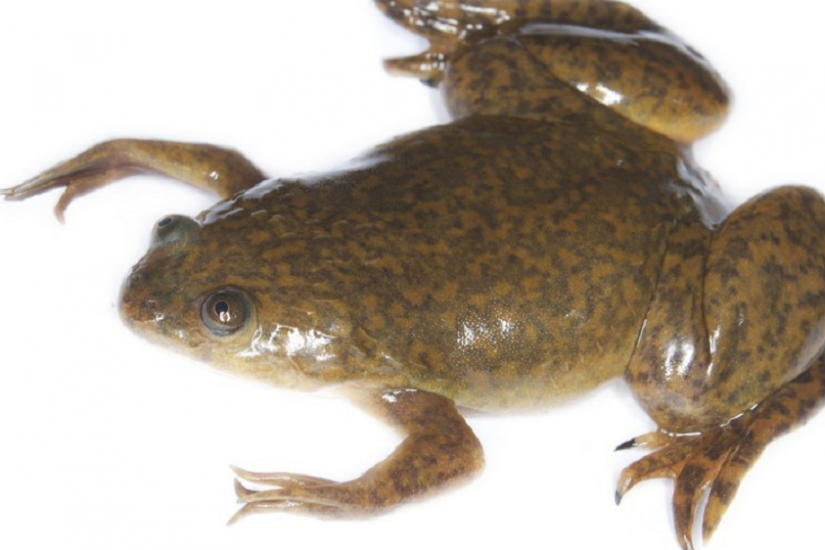The African clawed frog, Xenopus laevis, is a palm-sized, greenish-gray animal that hails from the ponds and rivers of sub-Saharan Africa, where it lived for millions of years without anyone injecting it with urine. That unbroken streak changed in the 1930s, thanks to a British scientist with the fantastic name of Lancelot Hogben.
Hogben was a talented but irascible zoologist with strident left-wing politics and penchant for burning bridges. In his early career, he studied hormones by injecting them into frogs, and when he moved to South Africa in 1927, he continued those experiments with the local amphibians. One of them—Xenopus—was so abundant and easy to work with that Hogben spent much of his time with the creature, and even named his house after it.
In 1930, Hogben injected Xenopus with extracts from an ox’s pituitary gland—a pea-sized hormone factory at the base of the brain. In response, the frog started laying eggs. This accidental finding was a fortuitous one. At the time, scientists knew that the urine of pregnant women contained hormones that were made in the pituitary and that affected the development of ovaries. If those same hormones could trigger egg-laying in Xenopus, perhaps the frog could act as a living pregnancy test.
Hogben never alluded to this application in his early reports, but it wasn’t long before he was working towards it. Disenchanted with racism in South Africa, he returned to Britain shortly after his seminal experiments and brought a colony of Xenopus with him. His colleague Charles Bellerby worked out how to raise the frogs appropriately, showed that they would reliably lay eggs when exposed to the urine of pregnant women, and confirmed that when they're not mating, they don't lay eggs spontaneously. Another team from South Africa had been doing similar work, and as academics are wont to do, the two groups developed a bitter feud. It was never truly resolved, although Hogben could be said to have won, since the test that resulted from this work took his name.
The “Hogben test” was simple. Collect a woman’s urine and inject it, fresh and untreated, under the skin of a female Xenopus. Then, wait. If the woman is pregnant, between five and 12 hours later, the frog will produce a cluster of millimeter-sized, black-and-white spheres. The results were reliable.
